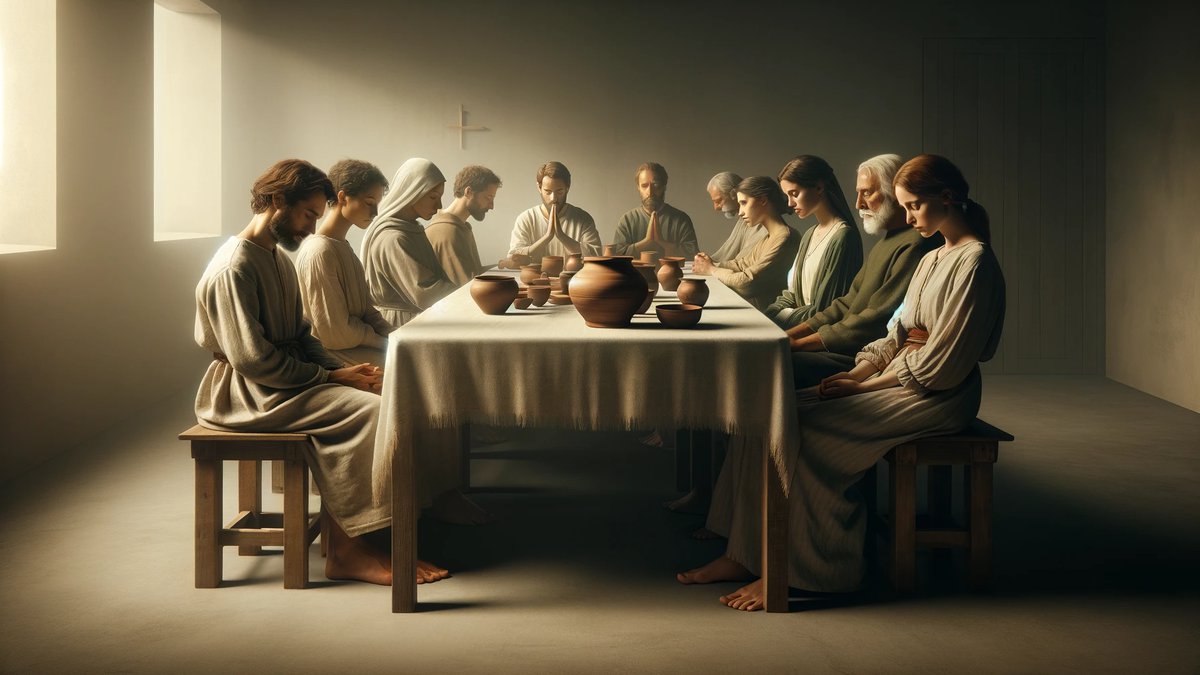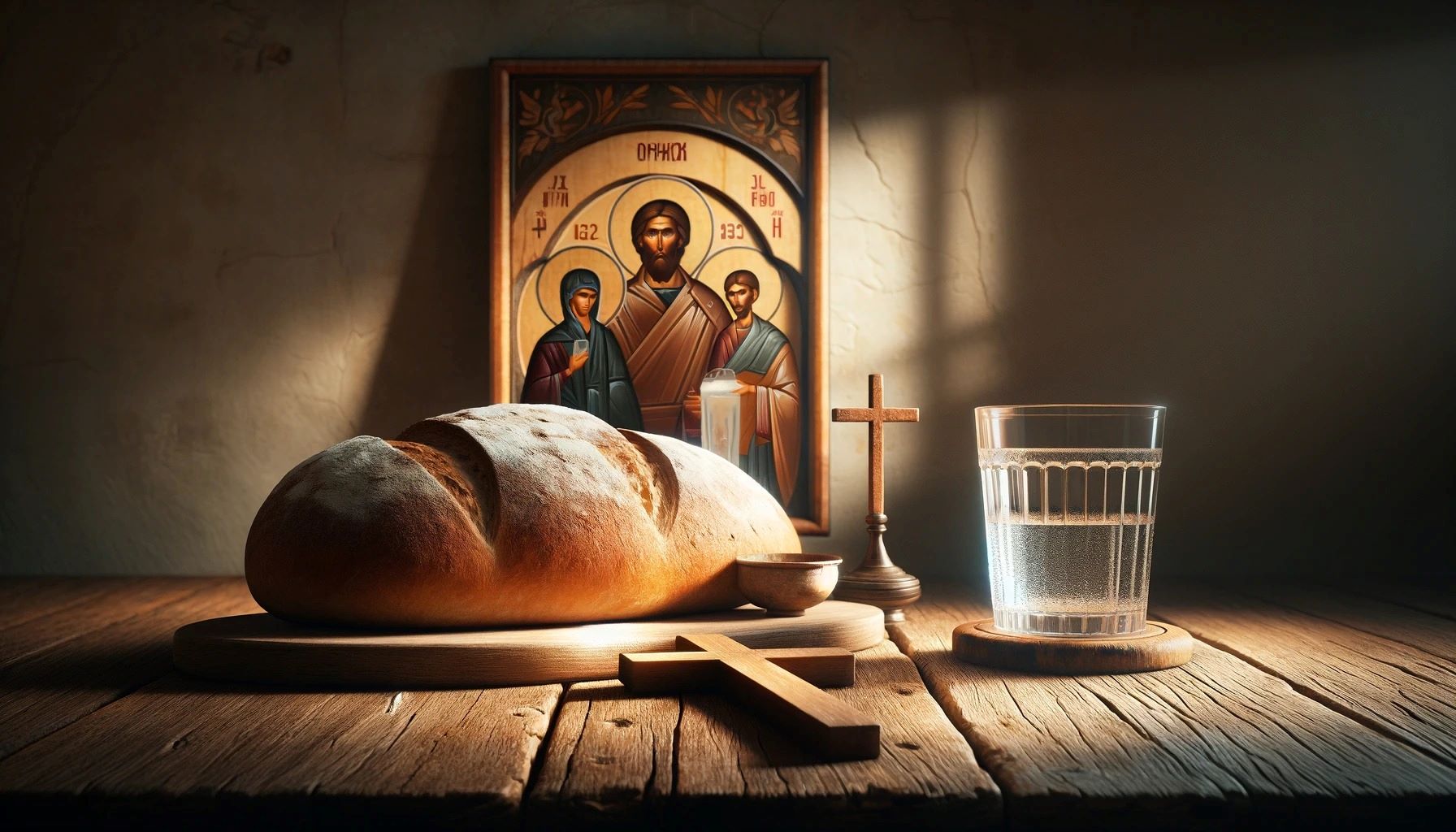Home>Special Themes>How Do Catholics Fast During Lent?


Special Themes
How Do Catholics Fast During Lent?
Published: February 29, 2024
Jason DeRose, Managing Editor at Christian.net, uses his expertise in religion and journalism to deepen understanding of faith's societal impacts. His editorial leadership, coupled with a strong academic background, enriches the platform’s diverse content, earning him recognition in both journalism and religious circles.
Discover the Catholic fasting practices during Lent and learn about the significance of this special tradition. Explore the spiritual and cultural aspects of fasting in the Catholic faith. #special-themes
(Many of the links in this article redirect to a specific reviewed product. Your purchase of these products through affiliate links helps to generate commission for Christian.net, at no extra cost. Learn more)
Table of Contents
The History of Lenten Fasting
-
Early Christian Practices: The tradition of fasting during Lent has its roots in the early Christian church. In the first few centuries of Christianity, new believers underwent a period of fasting and preparation before their baptism, which often coincided with the celebration of Easter. This period of fasting gradually evolved into the 40-day observance of Lent as we know it today.
-
Biblical Origins: The concept of fasting as a spiritual discipline is also deeply rooted in the Bible. The 40-day period of Lent mirrors the 40 days that Jesus spent fasting in the wilderness, as described in the Gospels of Matthew, Mark, and Luke. This biblical precedent for fasting during a period of spiritual preparation has been influential in shaping the observance of Lenten fasting in the Christian tradition.
-
Historical Evolution: Over the centuries, the practice of Lenten fasting has undergone various changes and adaptations within the Catholic Church. The specific rules and guidelines for fasting during Lent have been shaped by the decisions of church councils, papal decrees, and the traditions of different Christian communities. These historical developments have contributed to the diverse practices of Lenten fasting observed by Catholics around the world today.
-
Cultural Influences: In addition to its religious significance, the observance of Lenten fasting has also been influenced by cultural and regional factors. Different communities and ethnic groups within the Catholic Church have developed their own customs and traditions related to fasting during Lent, adding a rich tapestry of diversity to this ancient spiritual practice.
Read more: What Day Do You Fast During Lent
The Rules and Guidelines for Fasting During Lent
-
Ash Wednesday and Good Friday: Ash Wednesday marks the beginning of Lent, and Good Friday is the day of solemn observance in the Christian calendar. On these two days, Catholics aged 18 to 59 are called to fast. This traditionally involves consuming only one full meal and two smaller meals that, when combined, do not equal a full meal. Additionally, Catholics are called to abstain from eating meat on Ash Wednesday and all Fridays during Lent.
-
Abstinence from Meat: In addition to Ash Wednesday and Good Friday, Catholics are also called to abstain from eating meat on all Fridays during Lent. This practice of abstinence is a symbolic way of commemorating the sacrifice of Jesus Christ on Good Friday. While the definition of "meat" may vary in different cultural and regional contexts, the general principle of abstaining from the flesh of warm-blooded animals is upheld.
-
Fasting and Abstinence: The rules of fasting and abstinence during Lent are not intended to be overly burdensome, but rather to encourage a spirit of self-discipline and reflection. While the guidelines are set by the Church, individuals are encouraged to approach fasting and abstinence with a sincere heart, focusing on the spiritual significance of these practices rather than simply adhering to the letter of the law.
-
Exceptions and Pastoral Discretion: It's important to note that there are exceptions to the rules of fasting and abstinence, particularly for individuals with health concerns or other valid reasons. Additionally, pastoral discretion is often exercised by the Church to accommodate the diverse needs and circumstances of its members. The overarching goal is to foster a sense of communal solidarity and spiritual growth during the Lenten season.
-
Personal and Communal Observance: While the rules and guidelines for fasting during Lent provide a framework for the observance of this spiritual discipline, Catholics are also encouraged to approach Lenten fasting as a personal and communal practice. This may involve additional acts of self-denial, prayer, and works of charity, all of which contribute to the overall spiritual journey of Lent.
In summary, the rules and guidelines for fasting during Lent serve as a means of fostering spiritual growth, self-discipline, and solidarity within the Catholic community. By observing these practices with a sincere and reflective spirit, Catholics seek to deepen their connection to the sacrificial love of Jesus Christ and prepare themselves for the celebration of Easter.
Traditional Practices of Fasting for Catholics
-
Lenten Sacrifices: In addition to the prescribed rules of fasting and abstinence, Catholics often engage in personal Lenten sacrifices as a way of deepening their spiritual journey. These sacrifices may take various forms, such as giving up a favorite food or beverage, abstaining from certain forms of entertainment, or committing to acts of service and charity. The spirit of sacrifice is central to the traditional observance of Lent, as it mirrors the selfless love and sacrifice of Jesus Christ.
-
Prayer and Reflection: Alongside the practice of fasting, Catholics traditionally devote themselves to intensified prayer and reflection during the Lenten season. This may involve attending additional church services, participating in communal prayer gatherings, or setting aside dedicated time for personal prayer and meditation. The combination of fasting, prayer, and reflection creates a holistic approach to spiritual renewal and growth.
-
Stations of the Cross: A traditional practice during Lent is the devotion known as the Stations of the Cross. This involves meditating on the events of Jesus' crucifixion and death through a series of 14 stations, each representing a specific moment in the Passion of Christ. Many Catholic churches hold communal observances of the Stations of the Cross, providing a powerful opportunity for believers to engage with the solemnity and significance of the Lenten season.
-
Almsgiving and Acts of Charity: Lent is also a time for Catholics to focus on acts of charity and almsgiving. This traditional practice reflects the call to love and serve others, particularly those in need. Catholics may contribute to charitable organizations, volunteer their time and resources, or engage in acts of kindness and compassion within their communities. By embodying the spirit of generosity and selflessness, believers express their commitment to living out the values of their faith.
-
Fasting from Non-Food Items: In some cultural and regional traditions, Catholics may observe fasting from non-food items as a symbolic expression of self-denial and spiritual discipline. This could include abstaining from certain forms of technology, limiting personal possessions, or refraining from indulgent behaviors. The emphasis on self-discipline extends beyond food-related fasting, encompassing a wide range of personal and lifestyle choices.
-
Cultural and Regional Variations: It's important to recognize that traditional practices of fasting for Catholics may vary across different cultural and regional contexts. While the core principles of fasting, prayer, and sacrifice remain consistent, the specific customs and traditions associated with Lenten observance reflect the rich diversity within the global Catholic community. These variations contribute to the dynamic tapestry of spiritual expression within the Church.
In embracing these traditional practices of fasting, Catholics seek to embody the spirit of Lent in a holistic and meaningful manner. Through acts of sacrifice, prayer, reflection, and charity, believers engage in a transformative journey that culminates in the celebration of Easter, marking the triumph of hope, renewal, and redemption.
Modern Interpretations of Fasting in the Catholic Church
-
Emphasis on Spiritual Renewal: In modern times, the Catholic Church has placed a renewed emphasis on the spiritual dimensions of fasting during Lent. While the traditional rules and guidelines for fasting remain foundational, there is a growing recognition of the need for individuals to approach fasting as a means of spiritual renewal and inner transformation. This modern interpretation encourages Catholics to view fasting not merely as a set of external observances, but as a deeply personal and introspective journey toward deeper communion with God.
-
Integration of Mindfulness and Intentionality: Contemporary interpretations of fasting in the Catholic Church often emphasize the importance of mindfulness and intentionality in the practice of self-denial. Rather than simply abstaining from certain foods or luxuries, believers are encouraged to cultivate a heightened awareness of their actions and choices during the Lenten season. This approach fosters a sense of intentional living, where every act of fasting becomes an opportunity for self-examination, gratitude, and spiritual growth.
-
Inclusivity and Adaptability: Modern interpretations of fasting within the Catholic Church also recognize the diverse needs and circumstances of individuals within the faith community. There is an emphasis on inclusivity, acknowledging that not all believers may be able to adhere to the traditional rules of fasting due to health concerns, dietary restrictions, or other valid reasons. As a result, there is a growing spirit of adaptability and pastoral sensitivity, allowing for a more inclusive participation in the Lenten observance while still upholding the core principles of self-discipline and spiritual reflection.
-
Engagement with Social Justice and Solidarity: In response to contemporary social and global challenges, the modern interpretation of fasting in the Catholic Church often incorporates a heightened awareness of social justice and solidarity. Believers are called to consider the ethical dimensions of their fasting practices, reflecting on issues of poverty, hunger, and inequality. This approach encourages Catholics to connect their personal acts of self-denial with a broader commitment to addressing societal injustices and advocating for the well-being of all members of the human family.
-
Integration of Technology and Media Awareness: With the pervasive influence of technology and media in modern society, the Catholic Church has also begun to address the role of digital fasting as part of the Lenten observance. This modern interpretation acknowledges the potential impact of excessive screen time, social media consumption, and digital distractions on individuals' spiritual well-being. As a result, some contemporary Lenten practices may include periods of intentional digital fasting, encouraging believers to disconnect from technology and cultivate a deeper presence with themselves, their faith, and their communities.
-
Holistic Approach to Self-Denial: Beyond the traditional focus on food-related fasting, modern interpretations of fasting in the Catholic Church embrace a holistic approach to self-denial. This may encompass a broader spectrum of abstentions, such as reducing environmental impact, simplifying material possessions, or refraining from harmful habits. By expanding the concept of fasting to encompass various aspects of daily life, believers engage in a more comprehensive journey of self-discipline and spiritual enrichment throughout the Lenten season.
In summary, the modern interpretations of fasting in the Catholic Church reflect a dynamic and evolving approach to the ancient practice of Lenten observance. By integrating mindfulness, inclusivity, social consciousness, and holistic self-denial, contemporary interpretations of fasting seek to resonate with the spiritual and ethical challenges of the present age, inviting believers to embark on a Lenten journey that is both deeply personal and socially engaged.
The Spiritual Significance of Fasting During Lent
-
Self-Discipline and Mastery: Fasting during Lent holds profound spiritual significance for Catholics. It serves as a means of cultivating self-discipline and mastery over physical desires. By voluntarily abstaining from certain foods or luxuries, believers exercise control over their appetites and redirect their focus towards spiritual nourishment. This practice of self-denial is rooted in the belief that by mastering the physical self, individuals can open themselves to deeper spiritual insights and experiences.
-
Identification with Christ's Sacrifice: The act of fasting during Lent also carries symbolic weight in the Catholic faith. It is seen as a way for believers to identify with the sacrificial love of Jesus Christ. Through self-denial and abstention, Catholics enter into a spiritual communion with the sufferings of Christ, particularly during the 40-day period that mirrors his time of fasting in the wilderness. This identification with Christ's sacrifice forms a central aspect of the Lenten journey, deepening believers' connection to the redemptive power of the crucifixion and resurrection.
-
Inner Cleansing and Renewal: Fasting during Lent is viewed as a process of inner cleansing and renewal. By purifying the body through abstention, believers seek to purify their hearts and minds as well. This spiritual detoxification is believed to create space for the Holy Spirit to work within individuals, fostering a sense of spiritual clarity, renewal, and heightened receptivity to God's presence. The act of fasting becomes a transformative journey, cleansing the soul and preparing it for a deeper encounter with the divine.
-
Prayer and Introspection: The spiritual significance of fasting during Lent is intimately connected to the practices of prayer and introspection. As believers engage in self-denial, they are encouraged to devote themselves to intensified prayer and reflection. This combination of fasting, prayer, and introspection creates a fertile ground for spiritual growth, enabling individuals to draw closer to God, seek forgiveness, and discern the path of righteousness. Fasting becomes a catalyst for deepening one's relationship with the divine and seeking spiritual enlightenment.
-
Solidarity with the Suffering: Another dimension of the spiritual significance of fasting during Lent is the expression of solidarity with those who suffer. By voluntarily embracing self-denial, Catholics align themselves with the experiences of those who endure hardship and deprivation. This act of empathy and solidarity underscores the compassionate ethos of the Lenten season, prompting believers to extend acts of charity, justice, and compassion towards those in need. Fasting thus becomes a tangible expression of love and solidarity with the marginalized and oppressed.
-
Preparation for Easter Joy: Ultimately, the spiritual significance of fasting during Lent is intricately linked to the anticipation of Easter joy. The Lenten journey, marked by fasting, prayer, and self-examination, prepares believers to fully embrace the transformative power of Christ's resurrection. Through the discipline of fasting, Catholics seek to shed the burdens of sin, cultivate spiritual virtues, and emerge with hearts ready to rejoice in the triumph of Easter. Fasting becomes a spiritual pilgrimage, guiding believers towards the radiant celebration of new life and redemption.
In essence, the spiritual significance of fasting during Lent encompasses a multifaceted journey of self-discipline, identification with Christ, inner cleansing, prayerful introspection, solidarity with the suffering, and joyful anticipation of Easter. This profound spiritual practice serves as a transformative pathway for believers to deepen their faith, embody the values of compassion and sacrifice, and embrace the redemptive love of God.















